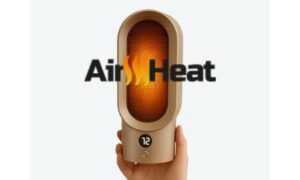In our increasingly fast-paced world quality sleep is no longer the luxury it is a necessity. As awareness of sleep’s vital role in health and well-being grows, so does interest in leveraging technology to enhance our nightly rest. Whether you’re a light sleeper, a tech enthusiast, or someone simply seeking better sleep, here’s how to improve sleep technology in your bedroom for optimal rest.
- Smart Mattresses: The Foundation of Restful Sleep
Modern sleep technology begins with the surface you sleep on. Smart mattresses go the beyond memory foam and spring construction. They are equipped with features like:
- Sleep tracking: Monitor sleep cycles, breathing, and movement.
- Adjustable firmness: Personalize your comfort for different zones.
- Temperature control: Cool or heat the mattress based on your preference.
Brands like Eight Sleep and Sleep Number offer mattresses that integrate seamlessly with mobile apps, allowing you to receive daily insights into your sleep quality and suggestions for improvement.
- Smart Pillows and Sleep-Enhancing Bedding
Smart pillows can track your sleep posture, gently vibrate to stop snoring, and even play white noise or relaxing music. Some models adjust firmness automatically, supporting your head and neck ergonomically throughout the night.
Sleep-enhancing bedding, such as temperature-regulating sheets and blankets made with phase-change materials (PCMs), helps maintain an optimal body temperature. These materials absorb, store, and release heat to ensure your body stays at a comfortable temperature during the night.
- Sleep Trackers: Insight-Driven Rest
Wearable sleep trackers like Fitbit, Oura Ring, and WHOOP provide data-driven insights into your sleep habits. These devices monitor:
- REM and deep sleep stages
- Resting heart rate and HRV (heart rate variability)
- Movement and disturbances
To improve sleep technology in your bedroom, integrate these devices with your smart home system or sleep apps. They can alert you to changes in sleep quality and suggest lifestyle adjustments.
- Smart Lighting for Circadian Support
Blue light from the screens disrupts melatonin production or can throw off your circadian rhythm. Smart lighting systems counteract this with features such as:
- Sunset simulation: Gradually dims lights in the evening to mimic natural sunset.
- Color temperature adjustment: Warms light tones at night and cools them during the day.
Brands like Philips Hue and LIFX offer circadian-friendly bulbs that you can automate based on your sleep schedule.
- White Noise Machines and Sound Technology
Noise disruptions are a common barrier to restful sleep. To improve sleep technology to your bedroom consider:
- White noise machines: These produce calming sounds that mask external disturbances.
- Sound machines with guided meditations: Help ease you into sleep using mindfulness practices.
- Smart speakers with sleep skills: Devices like Amazon Echo and Google Nest can play sleep sounds, ambient noise, or sleep meditations with voice commands.
- Climate Control: Smart Thermostats and Air Quality
Room temperature and air quality significantly affect sleep quality. A few smart enhancements include:
- Smart thermostats (e.g., Nest, Ecobee): Program nighttime temperature drops for optimal sleep conditions (around 60–67°F).
- Air purifiers: Remove allergens and pollutants for better breathing.
- Humidifiers with sensors: Maintain ideal humidity levels to prevent dry air discomfort.
Link these devices with sleep trackers to automate environmental changes based on your sleep data.
- Sleep Apps: Digital Coaches for Better Sleep
Sleep improvement apps offer tools for tracking, coaching, and meditation. Top-rated options include:
- Calm and Headspace: Guided meditations and bedtime stories.
- Sleep Cycle: Analyzes sleep phases and wakes you during the lightest stage.
- Pzizz: Uses psychoacoustic principles to optimize rest with soundscapes.
To improve sleep technology in your bedroom, integrate these apps with your smart devices for a holistic approach.
- Smart Curtains and Blinds
Natural light influences our sleep-wake cycles. Smart curtains or blinds automate light exposure in your room:
- Morning light exposure: Opens curtains gradually to help you wake naturally.
- Evening blackout mode: Closes blinds to block artificial light from outside.
Brands like Somfy and Lutron offer integrations with voice assistants and smart home hubs.
- EMF and Digital Detox Considerations
While improving sleep technology in your bedroom, be mindful of electromagnetic fields (EMFs) and screen exposure. Tips include:
- Use airplane mode on smartphones overnight.
- Turn off Wi-Fi routers or place them away from sleeping areas.
- Use analog alarm clocks to minimize digital interference.
This balance ensures technology enhances rather than the disrupts your rest.
- Integration with Smart Home Systems
Integrating your sleep tech with platforms like Amazon Alexa, Google Home, or Apple HomeKit can:
- Automate bedtime routines (dim lights, play white noise, lower temperature)
- Schedule wake-up rituals (open curtains, play morning playlist, start coffee maker)
- Send personalized sleep reports to your devices
Creating a Tech-Enhanced Sleep Sanctuary
Improving sleep technology in your bedroom is more than a trend—it’s a lifestyle upgrade. When thoughtfully chosen and used in harmony, smart devices can transform your room into a sanctuary that nurtures your mind, body, and circadian rhythm. Start with a smart mattress or tracker, then gradually integrate lighting, sound, and climate technologies.
By prioritizing sleep tech, you’re investing in better rest, sharper cognition, improved health, and a higher quality of life. It’s time to embrace innovation and reclaim your nights.



































